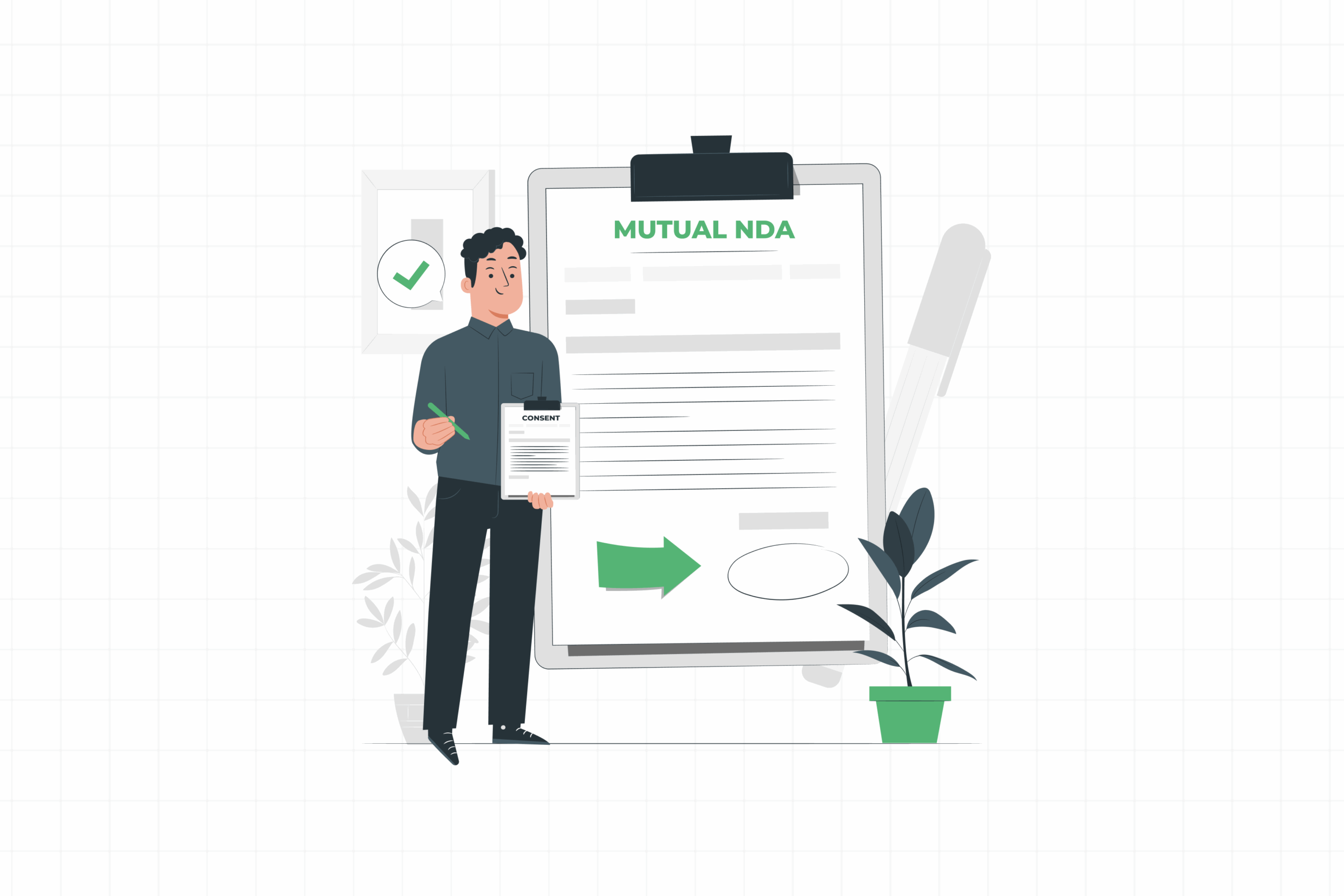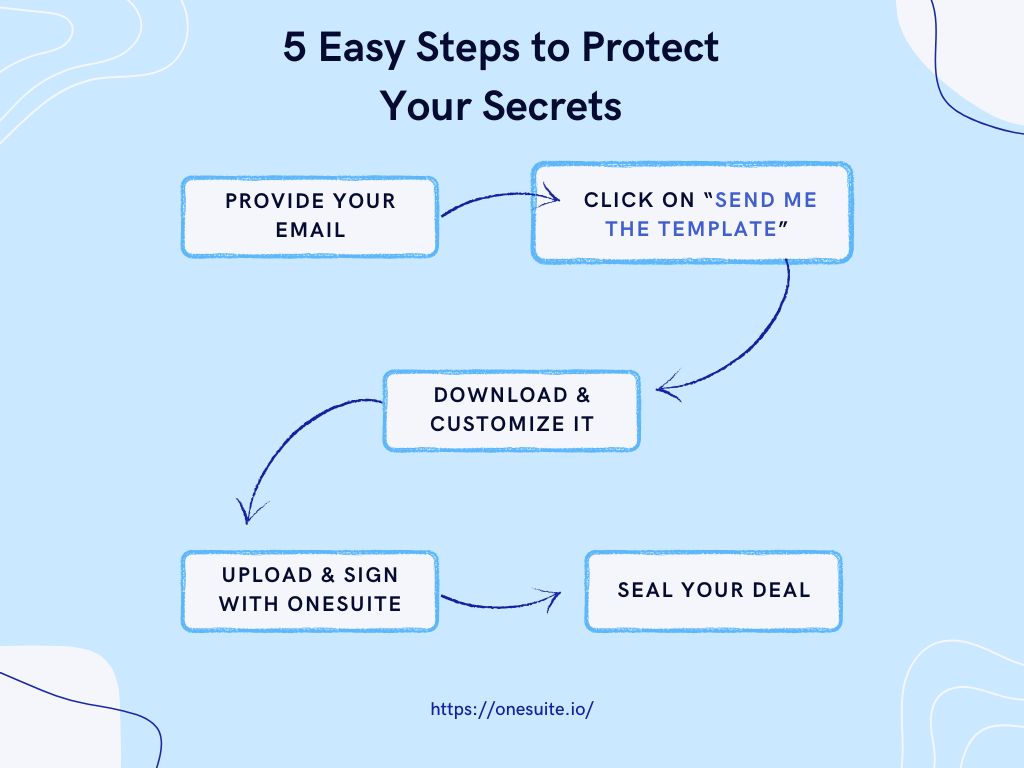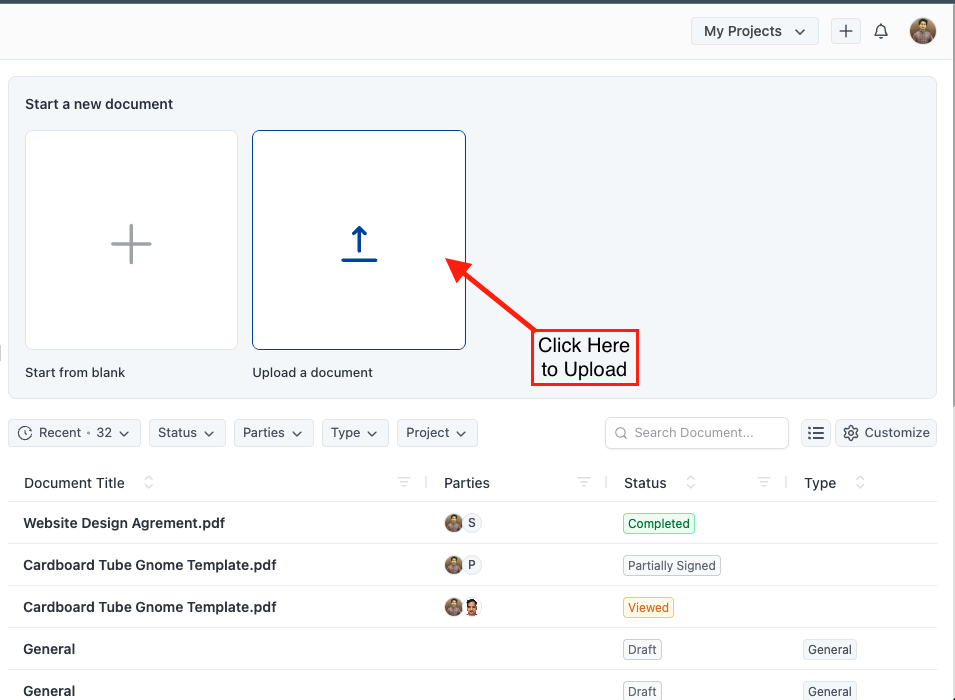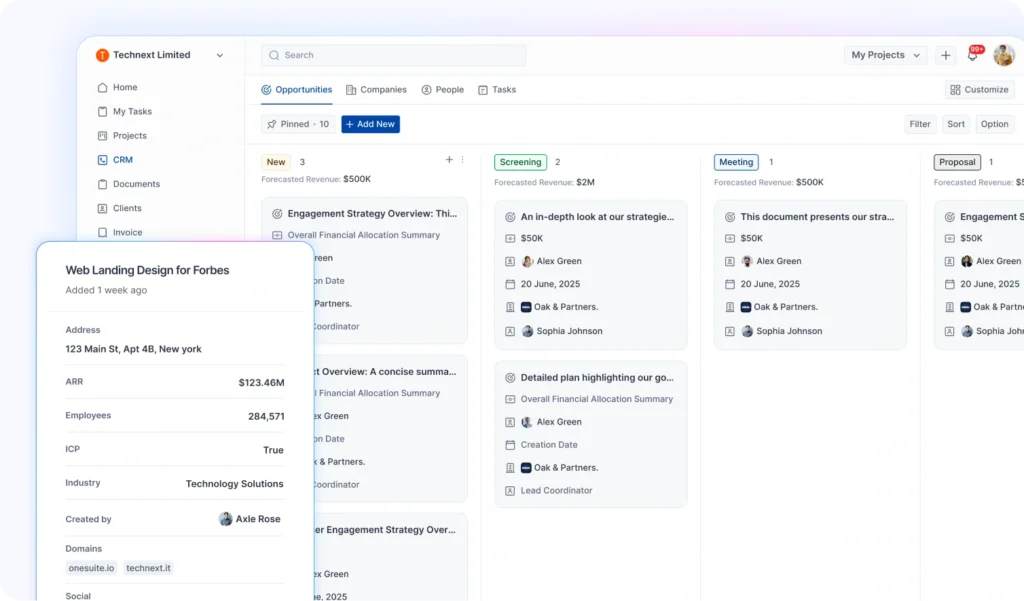
The first rule of Fight Club is: you DO NOT talk about Fight Club!
Good old Tyler Durden wasn’t messing around. And neither is a mutual NDA when it comes to keeping things confidential.
A mutual NDA protects both parties by ensuring that sensitive information stays private. It helps build trust and enables smooth collaboration.
With a mutual NDA in place, business ideas, plans, and trade secrets are kept secure. Whether you’re a startup founder, freelancer, or enterprise team member, this article provides all the insights you need to understand and use a mutual NDA effectively.
After reviewing 30+ legal NDA documents, consulting with legal resources, and analyzing how businesses actually use them in real-world deals, I’ve created this comprehensive guide on mutual NDAs.
And it comes with a free, customizable template for your convenience.
Key Takeaways
- A mutual NDA ensures both parties can safely share sensitive information without fear of leaks.
- Understand the key clauses to include in a mutual NDA and how to customize them for your needs.
- Learn how to easily send and sign your mutual NDA online using OneSuite.
- Access a free, customizable mutual NDA template to get started right away.
Get a Free, Easy-to-Use Mutual NDA Template
Before we get into the details, if you’re just here for the template, you can get it below:
Think of it as your quick-start shield for sharing sensitive information without the stress. And yes, it’s fully customizable!
Just fill in your info, and we’ll send it to your inbox.
⚠️ Quick heads-up: I’m not a lawyer. Just someone who’s read way too many NDAs. For real legal advice, talk to an actual attorney in a suit.
Understanding Mutual Non-Disclosure Agreements: What They Are, Why They Matter and when to use
Let’s start by understanding NDAs in detailed yet simple terms.
What is a Mutual Non-Disclosure Agreement, or mutual NDA?
A mutual non-disclosure agreement template is used when two parties want to share private information but keep it protected.
Both sides agree not to reveal or misuse the information. This is why it’s also called a “Bilateral NDA” or “Two way NDA.”
Basically, it’s a legal promise that protects ideas, plans, or trade secrets during talks, collaborations, or partnerships.
But what if only one side is sharing something private?
Unlike a two way NDA where both parties exchange and protect each other’s information, a one way NDA is used when only one party is sharing confidential details, and the other agrees to keep it private. This is known as a “Unilateral NDA.”
Key Differences Between Mutual and Unilateral NDA
So, how does a mutual NDA differ with a one-way NDA? Let’s explore!

When businesses or individuals work together, they must trust each other. And mutual NDAs put that trust down on paper.
Here is why it matters
Basically, a mutual NDA is like putting your ideas in a vault with a “No Entry” sign. It keeps your secrets safe and everyone knows what they can and can’t do.
To put it simply, it:
- Protects sensitive information: Both sides can safely share ideas, plans, or data without fear of leaks.
- Sets clear rules: It defines what can and cannot be done with the information.
- Gives legal backup: If someone breaks the promise, there are clear legal steps to follow.
When Should You Use a Mutual NDA?
Depends on your situation!
Choosing the right agreement relies on how the information flows between the parties.
You should use a mutual NDA template when both sides are sharing private information during a business talk or partnership. It protects the details and helps both sides feel safe about working together.
Here are some common situations where a two-way NDA is the right choice:
- Co-developing a product or service with another company
- Sharing a business idea with a potential partner or investor
- Starting a collaboration between two startups or businesses
- Working together on research, technology, or marketing plans

What a Standard Mutual NDA Template Includes?
Creating a strong business idea protection agreement is key to ensuring that both you and the other party are on the same page. It’s important to cover all the bases, so everyone knows what’s expected, and the information you share stays protected.
Below, I’ll walk you through the essential clauses you should include in your bilateral NDA.
Each clause is explained simply, so you understand exactly why it matters for your business and how it keeps your ideas safe. Now, let’s make a dive!
1. Confidential Information Definition
The first clause in any mutual NDA should define what information is considered confidential. This clause sets the boundaries and tells both parties exactly what needs to be protected.
It’s important to be specific. The more precise the description, the better protected both parties will be.
For example, you might include:
- Technical information: Designs, algorithms, software, or product specifications.
- Financial information: Budgets, revenue projections, and financial statements.
- Customer lists: Contact details, market research, and other business-related data.
Read also: Free Mutual Confidentiality Agreement Template (Download First!)
2. Purpose and Permitted Use
This clause of your bilateral NDA outlines why both parties are sharing information and what they can do with it. It is important to limit the use of the information to only the agreed purpose.
This section also makes it clear that neither side can use the confidential information for any other purpose outside the agreed scope without the other party’s permission.
Suppose, you may want to specify that the information is only for evaluating a potential partnership, developing a product, or negotiating a deal. Whatever it might be, the point is that you should fix this clearly and concisely.
3. Duration of Confidentiality
Every mutual NDA should define how long the confidentiality obligation lasts. Generally, the confidentiality period will extend beyond the termination of the agreement.
Setting a duration prevents indefinite secrecy. It ensures that both parties understand when their obligations will end.
For instance, you could specify:
- The confidentiality requirement will last 2 years after the information is disclosed, or
- The protection may last 5 years, depending on the sensitivity of the information.
4. Obligations of Both Parties
This clause outlines the duties both parties must uphold to maintain confidentiality. By clearly listing these obligations in a two-way NDA, both parties know what is expected of them in order to avoid legal issues down the line.
It typically includes:
- Duty to protect: Both sides must take reasonable steps to prevent leaks or unauthorized use of the information.
- Limit access: Only authorized individuals (within the companies or organizations) should have access to the confidential data.
- No unauthorized copying or use: The clause also emphasizes that neither side can copy, share, or use the information for personal gain or beyond the scope of the agreement.
5. Exclusions from Confidential Information
Not all information is considered confidential. A well-drafted mutual NDA should list exclusions—information that is not covered by the NDA.
These exclusions ensure that neither party is unfairly held responsible for information that is not actually confidential.
Common exclusions include:
- Publicly available information: If the information is already known or publicly available at the time of disclosure, it cannot be considered confidential.
- Prior knowledge: If a party already knows the information before signing the NDA, it’s excluded.
- Information independently developed: If the party develops the same information independently, it should not be covered by the NDA.
6. Dispute Resolution and Legal Remedies
This clause outlines how disputes will be handled if one party breaks the agreement. It’s also important to state what legal remedies are available if the agreement is violated, such as damages or injunctions. It can include different methods for resolving issues, such as:
- Arbitration: A neutral third party resolves the dispute.
- Mediation: A mediator helps both sides reach a settlement.
- Litigation: Taking the dispute to court.
7. Termination Terms
Really, really important!
This clause explains under what conditions the bilateral NDA can end. It ensures that the agreement doesn’t continue indefinitely, which would be unfair to either party.
Additionally, the clause should specify if certain confidentiality obligations continue after the termination of the agreement (which, typically, they do).
Say, the mutual non disclosure agreement might end:
- When both the parties agree to terminate the agreement in writing.
- When the purpose of the agreement is achieved (e.g., a product has been developed or a deal is made).
- After a set period of time, such as 3 years.
8. Jurisdiction/Governing Law
This clause specifies which state or country’s laws will govern the agreement. It also identifies the court that will have authority in case of a legal dispute.
For example, you might agree that any legal disputes will be resolved under California law or New York law. This clause ensures both parties understand where they would have to resolve conflicts if they arise.
9. Signatures and Contact Info
So, now you’re in the final section of any NDA. It ensures that both parties have authorized the agreement and that there is a record of who is agreeing to the terms.
The signatures section should include:
- The names, titles and contact information of the individuals who are signing.
- A space for their signatures and the date.
This section proves that both parties have agreed to the terms and are legally bound by them.
FAQs of Related Topics
How long do NDAs last?
NDAs typically last between 1 to 5 years, though some can last indefinitely, especially if the information is considered a trade secret. Confidentiality obligations may continue even after the agreement expires.
Are NDAs enforceable?
Yes, NDAs are enforceable as long as they are clear, reasonable, and not overly restrictive. If breached, the disclosing party can take legal action for damages or other remedies.
Confidentiality Agreement vs NDA: What’s the Difference?
Both serve the same purpose of protecting confidential information, but “Confidentiality Agreement” is often used in business or employment settings, while “NDA” is more common in formal business contracts. The protection offered is the same.
How to Customize a Mutual NDA for Business Idea Protection
Let’s look at some quick facts you’ll want to ensure, so your ideas stay safe without all the legal mumbo jumbo.
Use Plain Language vs. Legal Jargon
When drafting a mutual NDA, clarity is key. Stick to plain language as much as possible to avoid confusion.
Avoid overly complex legal jargon unless absolutely necessary, as the goal is to protect your business idea, not to complicate the agreement.
Tailoring for Specific Industries
Each industry has unique needs when it comes to confidentiality. If you’re looking for industry-specific or state-specific NDA templates, you can check out this detailed Non-Disclosure Agreement template from LegalTemplates
In general cases, consider adapting your NDA for the following:
- Tech: Add clauses related to intellectual property, software development, and patent rights.
- Healthcare: Ensure compliance with privacy laws like HIPAA if sharing medical information.
- Startups: Focus on business model protection and early-stage agreements with partners or investors.
Including Non-Circumvention Clauses
In cases where one party might be tempted to bypass the other, such as in partnerships or collaborations, a non-circumvention clause is crucial.
Sounding a bit like tough business jargon?
Think of it like a referee in a game. It ensures no one cuts in line and tries to make deals without you being involved.
So, this clause basically prevents one party from going directly to the other party’s clients or suppliers, without the intermediary involved.
When to Seek Legal Help
While you can customize a non-disclosure agreement on your own, there are scenarios where consulting a legal professional is highly recommended.
This is especially true if you’re dealing with intellectual property, significant investments, or complicated negotiations. A lawyer can ensure the NDA fully protects your interests.
💡 Pro Tip:
When you’re negotiating with new partners, make sure your mutual NDA includes clauses like non-circumvention and confidentiality agreements that safeguard your business relationships and help you play fair.
Sending and Signing Your mutual NDA Online
Digital signatures have made the agreement process much faster and more secure. By signing the mutual NDA online, you can avoid delays, ensure privacy, and keep a clear record of everything.
Benefits of Signing Digitally
- Speed: No waiting for paperwork to be delivered or signed. You can sign the document immediately, speeding up the process.
- Security: Online platforms offer encrypted transmission and secure storage, making it harder for unauthorized parties to access the information.
- Audit Trail: Digital signatures come with time-stamped records, providing a legal proof of when and how the agreement was signed.
Recommended Tools for Signing Your Bilateral NDA Online
Here are some online NDA signing tools. Based on the user-friendliness and simplicity, we recommend OneSuite for signing NDAs online.
- OneSuite
- Simple to use, even for beginners.
- Offers secure, encrypted signing and storage.
- Allows tracking of all signers and automatic notifications when the document is signed.
- Provides a comprehensive audit trail for legal protection.
- DocuSign
- Widely recognized for e-signatures.
- Offers advanced security features and compliance with global regulations.
- Adobe Sign
- Integrates with other Adobe products for easy access.
- Reliable and secure with a variety of options for e-signing.
Why OneSuite?
OneSuite is a great option for quick, secure mutual NDA signing.
It’s user-friendly, and you can upload your template, add signers, assign signature fields, and track progress. All from a single platform.
Let’s take a quick look at the simple steps to get the template and complete your NDA using OneSuite:

How to Easily Send and E-Sign a Mutual NDA Using OneSuite
OneSuite makes it easy to send, sign, and store your mutual NDA securely. Here’s a quick view of how to get it done in just a few steps:
Now, let’s discuss step by step in detail:
Step 1: Log In and Access Documents
Log in to your OneSuite account. If you don’t have one yet, create a free account. No credit card required. Once logged in, go to the Documents section from the left sidebar to start the process.

Step 2: Upload Your mutual NDA Template
Click on “Upload Document” and select your NDA. You can use the free mutual NDA template and customize as needed. Make sure your document is final and accurate, as it will be locked once signed and can’t be edited after that.

Step 3: Assign Signature Fields
After uploading the document, you’ll enter the signing interface.
- On the left, click “Add new party” to include signers (e.g., 1st Party for you, 2nd Party for the other signer).
- Then, drag and drop the Signature, Date, and Initials fields to the right spots on the document.
Step 4: Add Signers and Send
Once the fields are in place, you can add your signers. Enter their details (name and email) or select from your existing contacts. OneSuite will automatically suggest matches from your CRM or previous documents.
Customize the signing email if needed, then click “Send Parties to Sign”. Your signers will get a secure email with a link to sign the document.

Step 5: Sign and Get Signed
Both you and your signer will receive a secure link to sign. After clicking the link, simply follow the instructions to sign the document. Remember, in a mutual NDA, you and the receiver both have to sign.
So, once signed by both parties, the document will be locked to prevent changes. You’ll be able to download the signed copy along with a signature certificate.

Mistakes to Avoid When Using a Mutual Non Disclosure Agreement
When drafting or signing a bilateral NDA, small mistakes can cause big issues. That being said, mistakes do happen. Through my research, I’ve identified the most frequent errors people make in NDAs. Avoid these pitfalls to make sure your non disclosure agreement is solid and effectively serves both parties:
Not Specifying the Handling of Confidential Information
You should clearly state how the confidential information should be stored, shared, and disposed of. This ensures that sensitive data is protected throughout the agreement.
Failing to Address Electronic Signatures
With digital signatures becoming the norm, make sure the mutual NDA explicitly allows for electronic signatures. Many people overlook this and later face complications when trying to sign the document online.
Be sure to include a clause that confirms the eSigned NDA’s legal validity.
Unclear Terms for Breach of Agreement
Besides defining penalties, also outline how violations will be handled. For example, does a breach automatically result in legal action, or is there an opportunity for mediation or arbitration first? Being clear about this helps prevent misunderstandings later.
Not Defining Access Control
It’s important to outline who has access to the confidential information. For instance, if certain employees need to see the information, don’t forget to specify that only authorized individuals can access it.
Omitting a Confidentiality Review Clause
Business relationships and partnerships evolve. It’s crucial to include a clause that ensures both parties will review the mutual NDA periodically, updating it if necessary.
💡Read Also: Download a free, customizable OneSuite social media contract template for freelancers, agencies, and consultants.
Final Thoughts
A mutual NDA is a powerful tool for protecting your ideas and sensitive information. It ensures both parties keep things confidential, building trust and preventing potential risks.
Whether you’re working on a partnership, sharing a business idea, or collaborating on a project, having a two-way NDA in place offers peace of mind. It’s simple, effective, and ensures everyone is on the same page.
You can quickly send and sign your mutual NDA with OneSuite for a secure and smooth process. And to make things even easier for you, I’ve provided a free mutual NDA template.
So, before sharing anything important, remember to use a mutual NDA. It’s a small step that goes a long way in keeping your ideas safe and your business moving forward.
Just like no one talks about Fight Club, no one should be talking about your ideas without permission!
Find a Better Way to Grow
OneSuite streamlines projects, clients, and payments in one place, making growth hassle-free.

